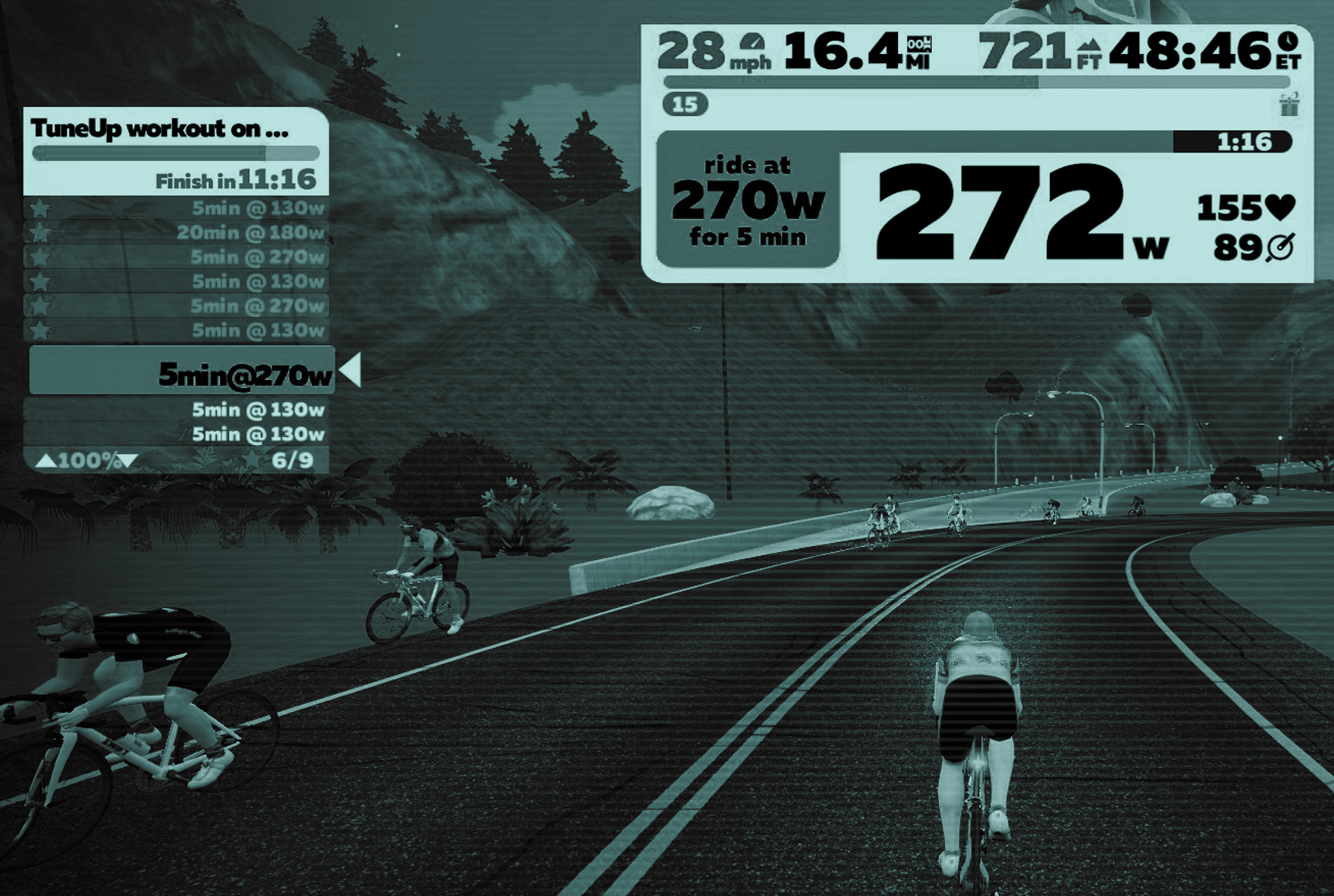Or, That Time I Became an E-Sports Streamer
Historically, sports have always been spaces of alternate realities, free from many of the constraints of everyday life. Rules that apply to the social world often do not apply to sports and, in many respects, this is what makes them uniquely exciting and interesting. 1
It’s October 2020. I’m spending a minute that feels like an eternity watching a member of Team SunWeb on the Passo dello Stelvio, in the Autumn Giro d’Italia,2 try to put on a jacket.
He’s in the front group and he’s trying to hold the wheel3 on the snow-melt-streaked road, while fumbling for the arm of the jacket. He needs this jacket. This jacket is what will allow him to survive the mountain pass descent which stands between him and Grand Tour stage victory.
Jai Hindley will go on to win the stage, exhaustedly lifting his arms aloft, his face full of the chill of the long descent, unable to quite form an expression. But before he gets there, on the Passo dello Stelvio, he struggles with the jacket. His front wheel veers alarmingly, almost crashing into the cliff wall to his left. He lets the jacket flap in the wind for a moment as he grabs at his handlebars to right them. The trailing sleeve snaps about, catching the air, costing him precious watts.
I watch this from the comfort of my desk, in the middle of a work day. The visceral urgency of his need to be warm. The mundane difficult of putting on a jacket, while pedalling, with numb fingers. It feels like watching a tightrope walk.
It’s August 2020. I’m spending a minute that feels like an eternity, my breath rattling and rasping. I am, as they say, “all over the bike” as I struggle to hold onto the group of A category racers, a lowly B cat, nevertheless in the front group of 4.
If I can hold on to the line—whether or not I out-sprint anyone—then I can win my category without a doubt. But only ten seconds behind us on the road is a group of ten or so, a mix of As and Bs, and they’re gaining on us. I jump out of the saddle and stamp on the pedals a couple of times to try and get on top of the gear.
Struggling for oxygen, I try to process the readout on the right of the screen of the contents of the group behind, their makeup, and watch the time distance hover at tens, flit to nine, back up to ten. There are three kilometres to go… we’re holding them off. I hold on. I hold on.
The gap oscillates but they never quite bring us back. I cross the line, confident in my B-cat first place. I would raise my arms if this race were in real life. Instead, I lie across the bars with sweat dripping from my forehead, try to breathe, and embrace the wave of nausea that a max effort often brings.
The year 2020, after moving countries and being out of it for a year, was going to be The Year I Started Racing Again. Like many best laid plans, Covid-19 put pay to that. In Denmark the spring 2020 lockdown was one of the first in Europe, so it never needed to be as strict as in other countries—I was mercifully allowed to ride outside with no time limit—but as the likelihood of lockdown approached, I found myself (like many thwarted bike racers) panic-buying a smart trainer, and signing up to Zwift.
I had long resisted Zwift, grumbled with other “proper” racers about how Zwift produced riders with big watts but no bike handling skills. Muttered about how I didn’t understand why you would choose to ride inside, when there was so much wonderful outside to be had. And if the weather is too bad, what’s wrong with rollers and Netflix?
2020, it turns out, was the year I turned to Zwift racing.
Zwift is an e-sport largely engaged with by people who have little-to-no knowledge about e-sports, and which few e-sports people have heard about. E-sports (for those of you outside of video games) are multiplayer videogames with a clear ‘win’ condition, that people play competitively, and to a professional level. They are most often played using consoles or PCs and handheld controllers. Zwift, on the other hand, is played by pedalling.
The typical way that people participate in Zwift is that they set their road bike up in a stationary “indoor” trainer,4 with a nice indoor gym fan, a mat to sweat onto, and with a heart rate monitor and cadence meter, or power meter (either directly on the trainer, or on the bike pedals/wheel/crank) which tells the system how hard you are working (your “heart rate zone”, revolutions per minute, and watts (power)). You tell the system your weight,5 and it places you in a virtual world, on a virtual road, with players from around the world. How hard you push on the pedals, plus your weight (watts per kg), changes how fast you go in the world. There are other factors: how aero and heavy your virtual bike is, whether you’re sat in the draft of others (see earlier notes for more), the gradient of the course (smart trainers can increase the resistance as you go “uphill”) and whether you are using one of the Mario Kart-like “power ups” (short lived bonuses which momentarily make you lighter, more aero, undraftable, etc.).
You can use Zwift to train, to ride with friends, and to race at an amateur and, increasingly, professional level. It’s an e-sport where your bike is a controller, and you play with your legs. There are other bike e-racing platforms, but Zwift is by far the most prominent.
Comparators for the size and notability of Zwift are hard to make compared to “conventional” e-sports like PubG, Fortnite, League of Legends etc. E-sports are often measured in viewership (in 2019, PubG Global Champs had 532 million viewers, LoL, 100 million)6. How then, to measure Zwift? Which is barriered by technology, subscription, and the fact that you are more often a participant than a spectator?
Some of the biggest streamed Zwift Leagues—such as the Covid-lockdown Tour de France Virtual Stage 1, which featured many locked down World Tour Pro teams and riders—achieve modest viewerships, Stage 1 of the TdF Virtual streamed live on 4th July 2020 currently (on 22nd October the same year) has ~69k views (a typical Tour de France Real stage can attract up to 25 million global viewers)78. However, peak lockdown in April 2020, Zwift hit concurrent Zwifters (honestly that’s less confusing than “rider” or “players”) of 34,940, Sunday April 5th.9 The company doesn’t share its active subscriber numbers, but is currently valued at over $1 billion with over 2.5 million signups,10 and there are even murmurings about proposing it for the Olympics.11
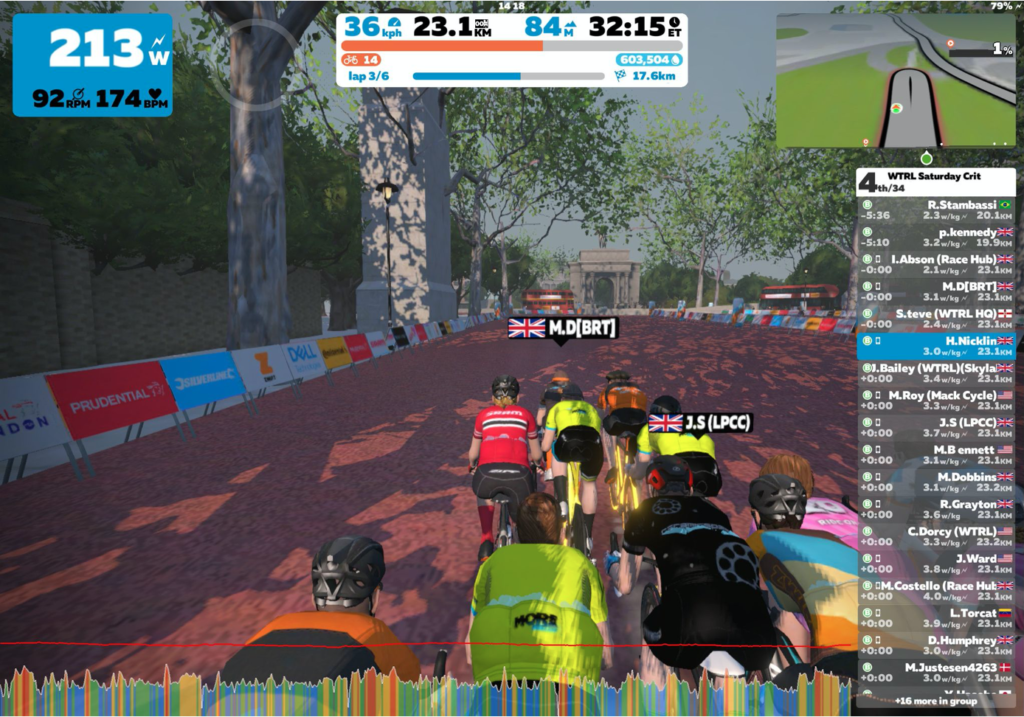
Zwift is perhaps best called a “physical e-sport”. It certainly doesn’t replicate the bike handling and “bunch skills” (riding in a rough-and-ready peloton) of road cycling, but it has game mechanics, and is powered by the Zwifter’s body.
I have been a racing cyclist for over half a decade, racing at a national level in the UK (okay, occasionally finishing above the time cut at a national level in the UK), and I’ve known about Zwift for 2-3 years, but it was 2020—the first year of Covid—that made me sign up to it. I was not alone in this; so did many other locked-down cyclists. The pros, too—many of whom live in Mediterranean-adjacent countries such as France, Spain, and Italy, which experienced some of the strictest lockdowns in the world.
For those of us who race bikes: 2020 was the year of Zwift.
So, 2020 became the year I watched pro Zwift racing for the first time, first competed in Zwift races, and (in the turnaround no one could have predicted) became an e-sports streamer, as through the spring I streamed my Zwift races weekly to a small audience.
My grumbles died away as I found myself not just enjoying it, but deeply interested in it. Interested in the spaces between game and sport that Zwift inhabits, and specifically the experience of being between spectator and athlete in which it invites you to participate.
I am a storyteller by trade. I run a story-driven games studio (Die Gute Fabrik), and as well as being a game designer, I have a decade-deep history as a playwright, performer, and writer. This means I cannot just simply “experience” a thing; I have to reflect on it as a mediated experience (it’s a curse). And as a storyteller, I found myself digging away at the question: what makes Zwift compelling?
Here’s the answer I came up with: dramatic irony.
There is an incompleteness in transplanting a sport into a virtual world. Thus you add in game mechanics which help you tell a better story with it (power ups, live data, challenging courses). There is an incompleteness to watching a bike race from afar, and thus you add in commentary, facts, figures, and the season-to-season storylines of the rise and fall of heroes, villains, champions, and plucky underdogs. Surprised by the eagerness of my spectators as I streamed (I had found watching Zwift racing extremely uncompelling) I struck on a useful storytelling term for exploring how the different modes of experience make thrilling their incompleteness: dramatic irony.
“[…] sports have always been spaces of unreality; they are theatrical environments in which stories unravel through the struggles of competing in their pursuit of excellence and victory over one another.”12
In playwriting, screenwriting, etc., dramatic irony is the offering of knowledge to the audience which the characters in the world of the work are not aware of. In Romeo & Juliet the audience know that Juliet has feigned her death with a powerful sleeping draft, but the broken-hearted teen Romeo does not.
As I sweated and pedalled my way through lockdown, connecting to friends and family as they cheered me on via Twitch chat, I found this literary device useful in articulating when each of the modes of participation and spectatorship are effective for me, across both the sport and the e-sport. Dramatic irony allowed me to think through the differential knowledge which keeps the tension “on”, and makes the storytelling of each space and mode of participation effective.
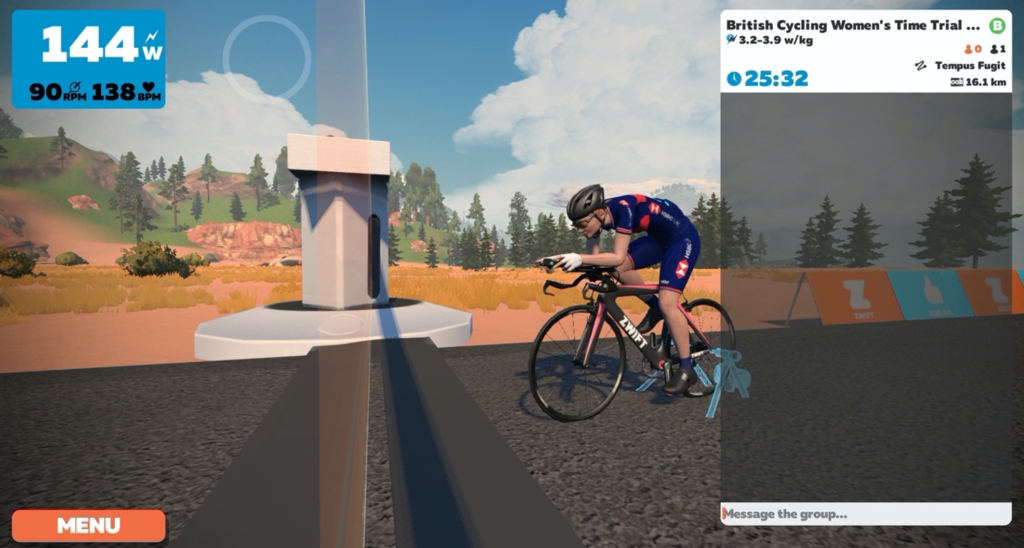
Let’s consider each mode of the spectator-player cycling spectrum in terms of dramatic irony (differential knowledge):
1. Riding a ‘real’ race:
Actual racing is 100% straight animal drama; high stakes, high speed, strategic decision making with your body and your brain and your instincts and the very limits of your capability. The dramatic irony here is that you have no access to the “big picture”. You can’t see everyone, or speculate on their thoughts. You have to use your experience and strength and wits and skills; it feels like being a wild animal as often as feels like being the player of a careful game of chess.
But the stakes of safety and effort are high and centred on your very being, and the story is yours; your losses, development, team, triumph. The unknowns are wider: big picture. Full data. You know your data, your stakes, the physical conditions, the moment-to-moment experience, but you make your decisions in your body, with no overview, no sense of what’s outside of your immediate surroundings.
2. Watching a “real” race:
A lot of watching a “real” race (actually going to a place where people are racing) is pretty boring. Instead you make a carnival of your attendance. You go with pals and you get drunk and participate in the local festivities. You cheer and shout and hopefully grab a team bidon as the peloton races by you at 60kmph. Or you go because you know people who are racing, because the consequence of your friend’s race is something you are invested in as a lived storyline you are sharing in.
In watching a “real” race, you are missing the “big picture” view, and you need to find your investment as a character without the close-up intimacies of being a rider, and without that big picture in the moment.
This experience is often about shared space. As you stand in that wind, and rain, and mud, on the same huge cobbles, or 10% climb that the riders have to traverse: you connect to them. You, too, climbed your way up that mountain so you can run alongside them in a Mr Morph costume. You, too, stood in the mud and rain of Flanders (insulated by some fine beer, perhaps) to wave your Belgian flag aggressively in their swift passing faces.
You have a connection to the bodies of the cyclists through the terrain and conditions. While you miss the big picture, the complexities of the riders’ character and history-connection, and the personal physical exertion, you share the lived context, you enjoy the adjacent carnival, and as they thrum by, you thrill in the split second unification with the rider experience.
3. Spectating via television coverage on “real” racing:
Continuing from the “real” race spectator experience, spectating via television removes the shared physical context, and the carnival. You no longer have physical “knowledge” of either racing or racer. But in compensation for that the “bigger picture” is expanded for you. You see as much of the race as you wish to (and is broadcast). As the riders play with their real expressive bodies and limits, the commentators provide mediated spectators with live data, past histories, meaningful analysis, lived company,13 and narration to make sense of the “raw material” for storytelling you have in front of you.
A skilled commentator pronounces the smørrebrød of foreign names correctly for you, explains the stakes, guides you through rivalries, highlights certain key characters, and (in the case of “colour” commentators) share their expertise on riding such races in their previous life as a pro-cyclist.
Your knowledge is of character-connection, history, storied context, and in the modern era, the live data (heart rate, power, km remaining) of the players.
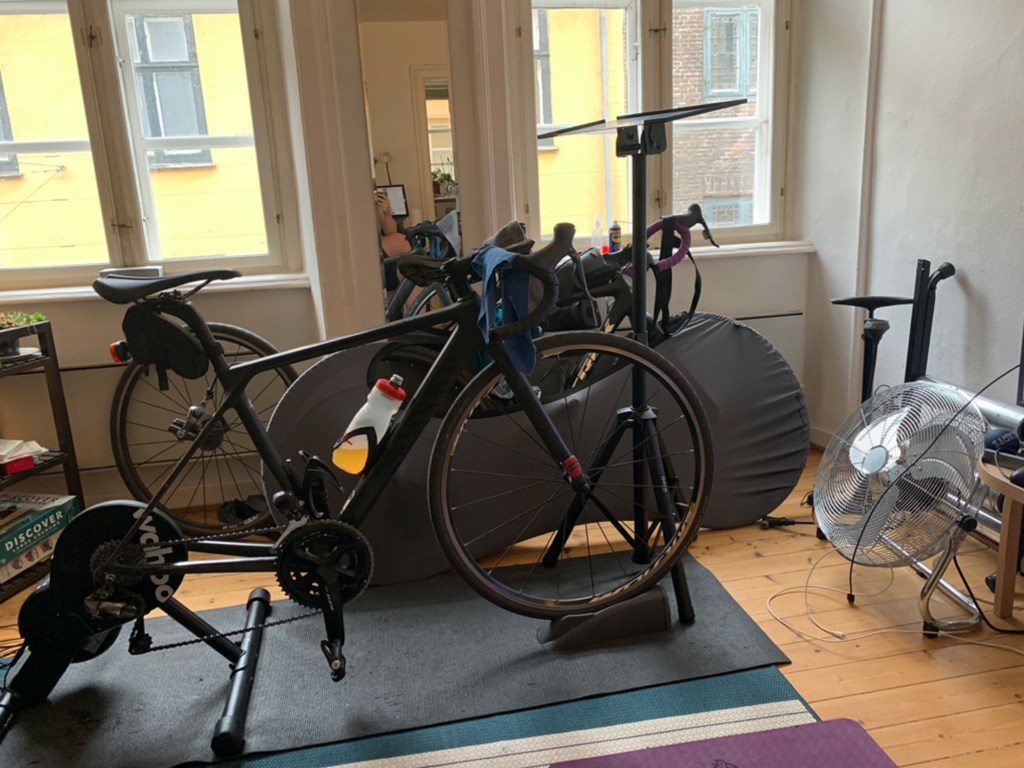
4. Riding a Zwift race:
Here’s my theory of why I found Zwift racing compelling: Zwift takes the dramatic irony model of spectating on a race via media, and replaces the pro-riders’ bodies with our own. It blends the two, and Zwift racing becomes dramatic information.
It may not have the physical stakes of the peloton: the freezing cold, the cliffside hairpin, the rough cobbles. But in adding the live visualisation of data to this reduced-complexity racing (it is “simply” a power-to-weight competition, less a few minor tactics introduced by power ups and drafting), Zwift infuses the rider’s race with spectatorship.
I found myself tweeting the following after the race I mention at the start of this article:
“Rode a really fun Zwift race today and realised after exactly how it was fun—and why watching the races is just dissatisfying. It’s because the mode of racing is actually somewhere between racing & spectating. Reducing the complexity of racing, adding in data and overview.”
In participating in a Zwift race you blend a lower-stakes bodily experience (and lack of being able to “read” your competitors’ body language and expressions) with a greater “big picture” view of your and their data. So you bodily know the exertion, the effort, but as well as your data (lived and visualised), you see their data—you see a “big picture” of the virtual presence of the other riders from around the world, in their distance from you, and their watts-per-kilogram.
The dramatic irony of Zwift racing is found in every one of these details. The “unknown” is in the tension between the simplified aspects of the complex experience of a bike race, combined with simplified aspects of the “big picture” of mediation. It is found in their blending.
The bodily experience of racing a bike, the data, context, conditions: all are available, all are simplified. The “reality” which isn’t achievable in the re-presentation of the virtual reality is compensated for in the blending of participation and spectatorship, legible and compelling.
5. Spectating on a Zwift race stream:
But to complete the spectrum of interest, and the metaphor of dramatic irony, we have to consider Zwift race spectatorship.
For a long time over the lockdown I was bewildered by what left me cold about spectating on the pro-Zwift races that sprang up. As they brought professional road riders (whose history, rivalries and season-to-season stories I knew) and commentators together to live stream (with videos of each rider they could switch to for suffering faces to substitute for the hard-flat visage of the virtual riders), I tuned in, and tuned out.
It was in articulating the use of dramatic irony in thinking through this reaction that I was able to identify why I just couldn’t get on with it. I realised that in this form, without my expressive bodily connection, Zwift became just… information. There was too much disconnect between my body, their body, and the story of the competition.
In turn, I think friends might enjoy watching a friend race (some of mine say they do at least, and tuned in more often than even English politeness would dictate) because they infer drama from their close relationship to you and your dramatic existence. They know your journey, your stakes, your body, far more intimately than they would a professional rider.
When you spectate a Zwift race, you miss the bodily experience. You have no lived, shared context. Your knowledge is data, story/history, system rules, but (unless watching a friend, or racing yourself) there’s no shared context. As the “knowns” are simplified, the distance from the lived experience keeps them over-simple. Data alone replaces data-driven storytelling.
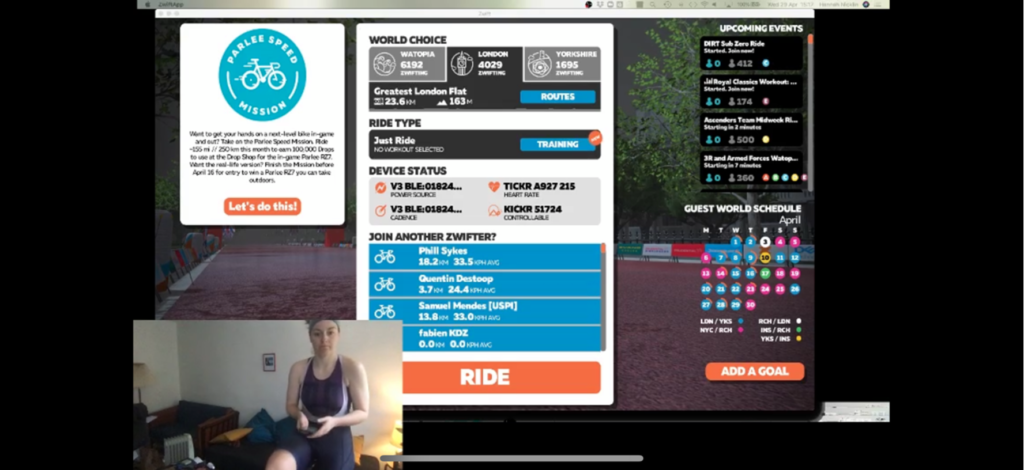
Part of the success of any sport is on the strength of its spectator-experience. And there are people running “live” Zwift events. At the 2019 World Championships in Yorkshire a Harrogate pub hosted the World Zwift Championships. There, some of the best e-racers in the world competed live on a stage, plugged into Zwift, sweating and grimacing their way to triumph or loss as around them a carnival of increasingly drunk spectators cheered and shared the same sweaty, storied air.
(Remember being able to comfortably breathe the shared air of shared space? I think often of the word “conspire” which means ‘to breathe together’ and that it is possibly that which I miss the most about gigs, crowded pubs, close hugs; the heat of another’s breath).
Physically staged Zwift races like these return the shared context and bodily expressive experience to the data. They add in a carnival to boot. But what of spectating over a stream? Will that ever be “enough” of a well-balanced dramatic irony?
The game designer in me wonders if greater interactivity is the answer. If a viewer didn’t just see the choice of the stream director—if they could switch to see the faces of different riders, if they could choose whose stats to view, highlight, if they could even intervene to vote on who might receive which power up at the next waypoint…
I think adding agency/authorship to the spectator might make the data “active” again, possibly almost investigative. Perhaps it would enable the spectator to build a story they find legible, without the commonalities that make other modes of spectatorship and participation compelling. Perhaps.
Mostly, though, all these thoughts about dramatic irony and physical e-sports percolated in my mind for the first few Covid-19 months because my Zwifting through lockdown was about something more visceral and essential: survival. Zwift was a new and achievable challenge. It gave me a comprehensible and swift learning curve to navigate. It gave me a connection in breath and sweat to people around the world, and a reason to talk to my loved ones in a comfortable, adjacent manner.
And it gave my listless days a structure, my body a means of completing the stress-response cycle in a world with a sudden, huge, unwieldy, stressor, which made everything feel incomprehensible. The data gave me an anchor, my body a weight in the world.
The exercise of my mind around the term ‘dramatic irony’ and the qualities of bike racing, physical e-sports and spectatorship were simply a side effect. Emergent behaviour, conjured out of data, connectivity, and sweat.
Hannah Nicklin (website, twitter) is a British writer, game designer, academic and artist working at the confluence of game & narrative design, writing, and digital art. Following a decade-long freelance career in the spaces between performance, writing and play, Hannah is currently the Creative Director of Die Gute Fabrik, who recently released multi-award winning mutant soap opera MUTAZIONE.
Top image based on fatigue lines by dolanh under a CC BY-NC-SA license, and released under the same license. Other images writer’s own.
- Miah, Fenton and Chadwick, 2020, “Virtual Reality and Sports: The Rise of Mixed, Augmented, Immersive, and Esports Experiences” in 21st Century Sports (Future of Business and Finance) (p. 372). Springer International Publishing. Kindle Edition.
- The Tour of Italy (like the Tour de France, but of Italy). Usually a Spring race and the first of the three “Grand Tours”; Giro d’Italia, Tour de France, Vuelta a España (Spain). However, in 2020 the race season was suspended during the peak road season (spring-summer) and all three grand tours happened bunched up into late summer and autumn.
- A cycling phrase which means “to keep up with”. You get a marked aerodynamic benefit on a bike from “sitting on the wheel” of another cyclist—riding just behind them, in their “draft”. This can save precious effort. Studies show drag reductions of between 27% and 50%, in fact. For the provenance of that stat, and to read more about the science of drafting, head to https://cyclingtips.com/2017/10/much-benefit-really-get-drafting. And so to “hold the wheel” basically means ‘to keep up with the rider in front of you’.
- Australia: Ergo, America: Trainer, UK: Turbo trainer. I don’t know other languages’ word for it. The Australian one is the silliest, because it refers to a mode of the trainer—where it forces you into a certain power by changing resistance for your current cadence until you’re producing the desired power output. This footnote mostly exists to be cheeky with the Australian I know will be editing it
- One of the most popular forms of cheating on Zwift is ‘weight doping’—where shaving even a little off your weight can make a big difference to your effort in a race. Pro-am (pro-amateur) races have requirements whereby competitors have to post pictures of themselves weighing themselves, only just stopping short of forcing them to hold a copy of today’s newspaper.
- Osman, Jim, 2020, “As Zwift CEO Hints At An IPO, Here Are The Top E-Sports Stocks For 2020” on Forbes.com https://www.forbes.com/sites/jimosman/2020/07/10/zwift-ipo-top-esports-stocks-2020/ accessed 22.10.2020
- Zwift, Youtube Channel “Tour de France Virtual // Stage 1 – Watopia Hilly Reverse”, Streamed live on 4 Jul 2020 https://www.youtube.com/watch?v=EhIikOHoGlw&ab_channel=Zwift accessed 22.10.2020
- Van Reeth, Daam: “Forecasting Tour de France TV audiences: A multi-country analysis” in International Journal of Forecasting Volume 35, Issue 2, April–June 2019, Pages 810-821. https://doi.org/10.1016/j.ijforecast.2018.06.003 accessed 22.10.2020
- Schlange, Eric: “NEW “PEAK ZWIFT” ACHIEVED: 34,940” on Zwiftinsider.com Apr 5 2020 https://zwiftinsider.com/peak-zwift-34940/ accessed 22.10.2020
- Loizos, Connie “Zwift, maker of a popular indoor training app, just landed a whopping $450 million in funding led by KKR” on Techcrunch.com September 16, 2020 https://techcrunch.com/2020/09/16/zwift-maker-of-a-popular-indoor-training-app-just-landed-a-whopping-450-million-in-funding-led-by-kkr/?guccounter=1 accessed 22.10.2020
- Drier, Fred: “Inside Zwift’s plan to make virtual racing a professional sport” on Velonews.com November 13, 2019 https://www.velonews.com/news/road/inside-zwifts-plan-to-make-virtual-racing-a-professional-sport/ accessed 22.10.2020
- Miah, Fenton and Chadwick, 2020, “Virtual Reality and Sports: The Rise of Mixed, Augmented, Immersive, and Esports Experiences” in 21st Century Sports (Future of Business and Finance) (p. 372). Springer International Publishing. Kindle Edition.
- Sometimes sitting through a 240km stage while the commentator and their ‘colour’ person chat about the history of the part of the world they’re racing in, recipes from that area, or the ‘colour’ person’s ex-pro career, are some of the best bits. And it also makes the ‘lived experience’ of the real time the racers exert themselves reflected in the endurance activity of the commentary, and in turn the watching.
